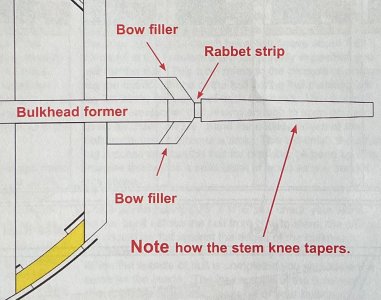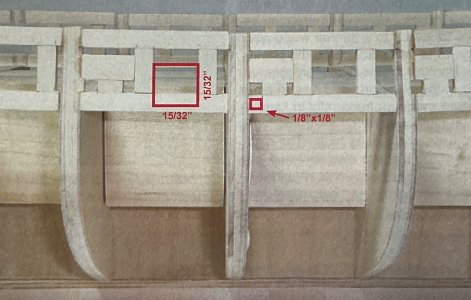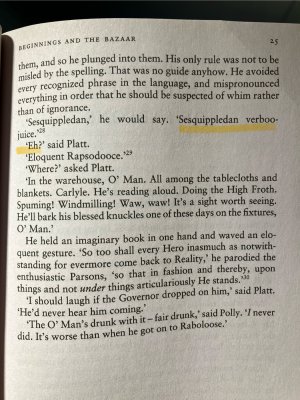- Joined
- Dec 3, 2022
- Messages
- 1,547
- Points
- 488

Introduction
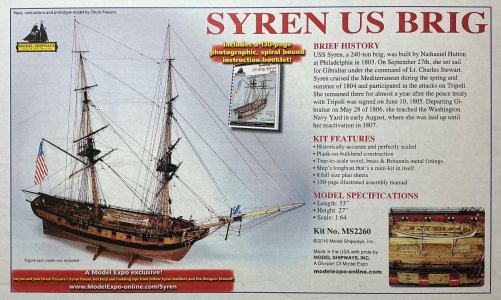
Good day to you all!
Today I broke the seals on this box of delights. It’s been in a cupboard for a couple of years but recently was moved onto a vacant bookshelf, just to fill the space left by a cull of my library (40% dumped. Yay!).
Of course, once it was in plain sight, it began to whisper, “Build me. Build Me. You know you want to. Go on, commit yourself to a relationship with a three dimensional jigsaw puzzle, macrame set and historical obsession all in one. Disturb your nights with the solving of a billion problems. And then abandon me when you are done. I know you, you cruel and ruthless man.”
“No! No! I can’t face the heartbreaks. I haven’t the time. I can’t afford it.”
But it was hopeless. Resistance proved fertile and here I am again, entering the lists for another battle of man vs model.
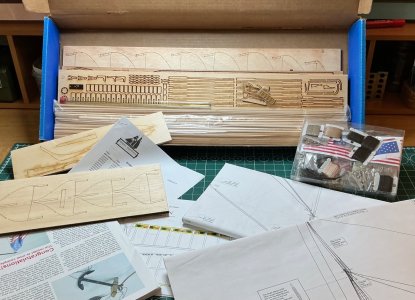
Estimated build time = 10 to 14 months (plus time outs for my periodic depressions)
Build style = Classic clean build, aiming at a museum style finish. Historical accuracy is somewhat important to me, though subordinate to considerations of cost, beauty, and practicality. I don’t intend to use aftermarket add-ons but I’ll scratch build improvements where I can.
My main aim is to refine the skills that I developed on the Vanguard Alert (1777) which I now consider to be a seven out of ten construction. I’ll be very pleased if I can get to a nine with Syren. To achieve this I accept the need for a lot of do-overing. I’m not short of wood, it’s determination that might be in short supply from time to time.
A secondary (but only just) aim is to write an entertaining and honest log. If you want to join in you are very welcome. That’s the whole point of the forum, innit? A kind word will help me through the dark times (planking, rat lines and that drafted longboat!) and if you take the trouble to write words to me, I promise that I’ll write a reply.
I ask only that you give me only honest praise. Please don’t tell me that my work is awesome unless you genuinely feel ‘reverential respect mixed with fear or wonder’ - over-praising will tend to make me complacent and lead to a lowering of standards. Constructive criticism is also welcome and all suggestions for improvement will be considered, though I might not agree or be able to implement them.
~~~~~~~~~~
Stage one is to read through the instruction manual several times. I had a look at the first few pages last night and I’m fairly impressed. The photos are less useful to me than the drawings and American grammar conventions render some of the text a bit cryptic but it’s head and shoulders above the manual for Alert and I managed to build that one. Close study of The Book will take me quite some time but that’s OK, a third big aim of this build is to develop my patience.
See you ASAP, Smithy.

Good day to you all!
Today I broke the seals on this box of delights. It’s been in a cupboard for a couple of years but recently was moved onto a vacant bookshelf, just to fill the space left by a cull of my library (40% dumped. Yay!).
Of course, once it was in plain sight, it began to whisper, “Build me. Build Me. You know you want to. Go on, commit yourself to a relationship with a three dimensional jigsaw puzzle, macrame set and historical obsession all in one. Disturb your nights with the solving of a billion problems. And then abandon me when you are done. I know you, you cruel and ruthless man.”
“No! No! I can’t face the heartbreaks. I haven’t the time. I can’t afford it.”
But it was hopeless. Resistance proved fertile and here I am again, entering the lists for another battle of man vs model.

Estimated build time = 10 to 14 months (plus time outs for my periodic depressions)
Build style = Classic clean build, aiming at a museum style finish. Historical accuracy is somewhat important to me, though subordinate to considerations of cost, beauty, and practicality. I don’t intend to use aftermarket add-ons but I’ll scratch build improvements where I can.
My main aim is to refine the skills that I developed on the Vanguard Alert (1777) which I now consider to be a seven out of ten construction. I’ll be very pleased if I can get to a nine with Syren. To achieve this I accept the need for a lot of do-overing. I’m not short of wood, it’s determination that might be in short supply from time to time.
A secondary (but only just) aim is to write an entertaining and honest log. If you want to join in you are very welcome. That’s the whole point of the forum, innit? A kind word will help me through the dark times (planking, rat lines and that drafted longboat!) and if you take the trouble to write words to me, I promise that I’ll write a reply.
I ask only that you give me only honest praise. Please don’t tell me that my work is awesome unless you genuinely feel ‘reverential respect mixed with fear or wonder’ - over-praising will tend to make me complacent and lead to a lowering of standards. Constructive criticism is also welcome and all suggestions for improvement will be considered, though I might not agree or be able to implement them.
~~~~~~~~~~
Stage one is to read through the instruction manual several times. I had a look at the first few pages last night and I’m fairly impressed. The photos are less useful to me than the drawings and American grammar conventions render some of the text a bit cryptic but it’s head and shoulders above the manual for Alert and I managed to build that one. Close study of The Book will take me quite some time but that’s OK, a third big aim of this build is to develop my patience.
See you ASAP, Smithy.
Last edited:



